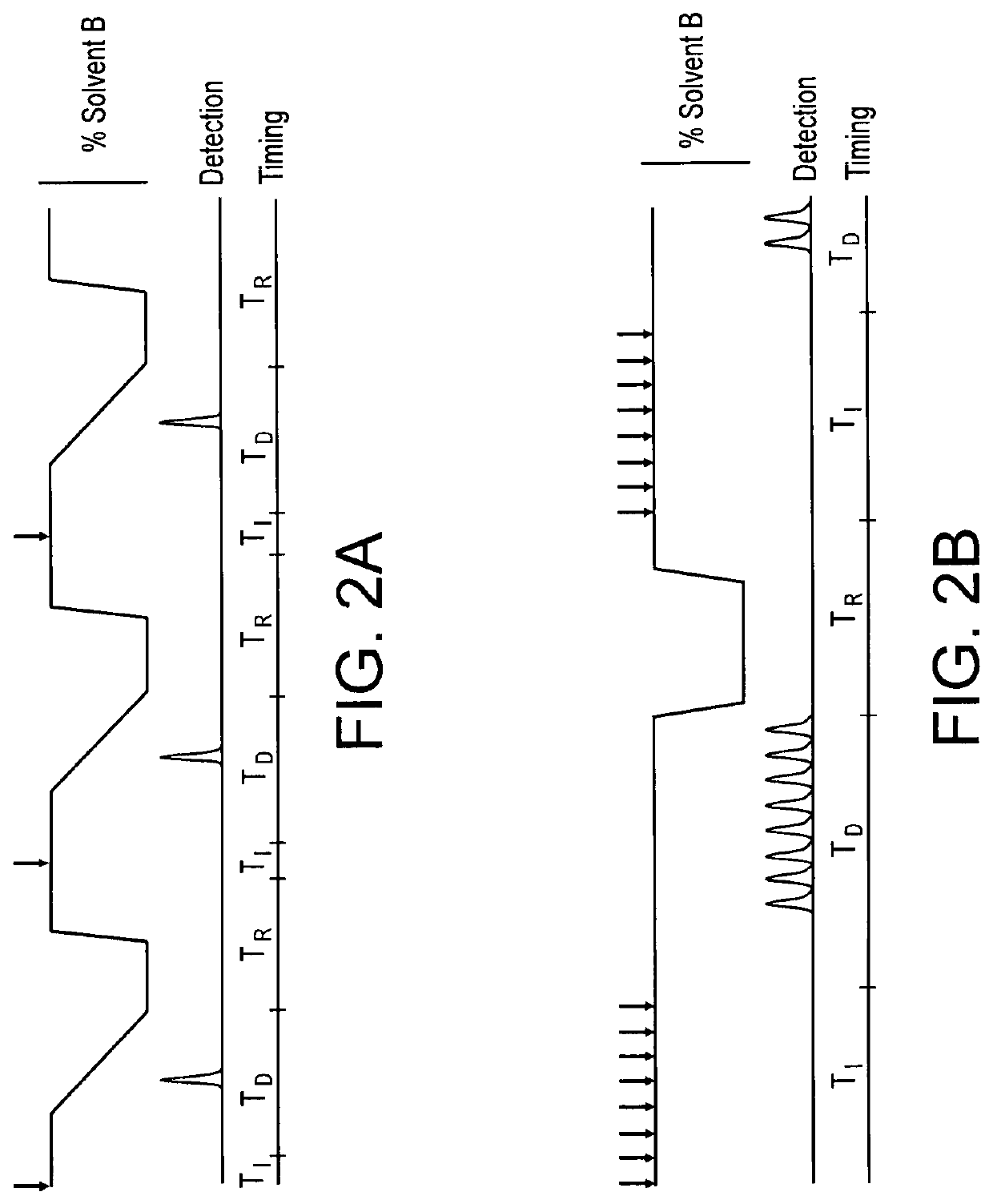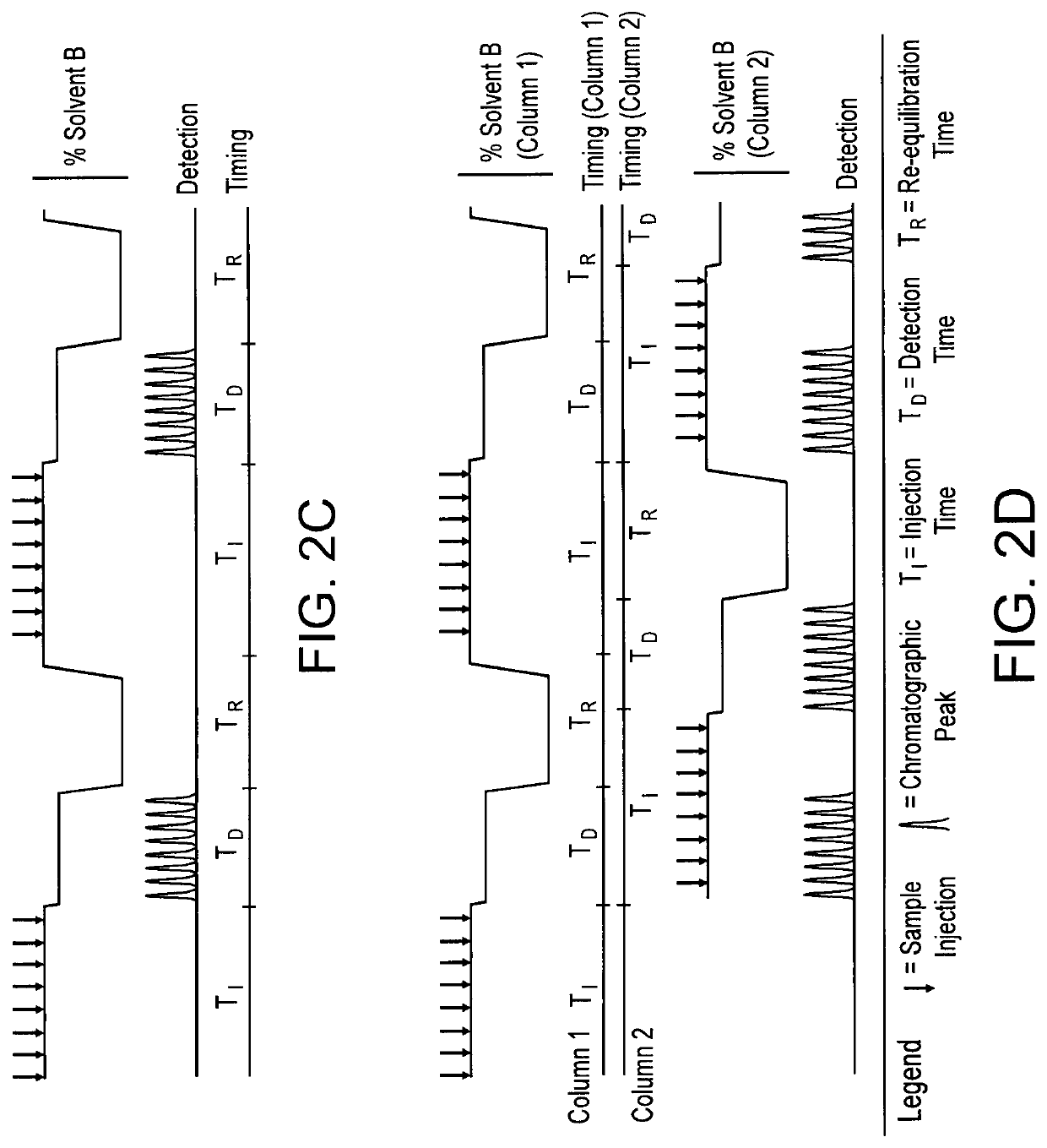Method for Detecting Urinary Tract Infections and Sample Analysis Using Liquid Chromatography
a technology of liquid chromatography and urinary tract infections, which is applied in the direction of instruments, biological material analysis, measurement devices, etc., can solve the problems of unsuitable clinical treatment, unsuitable antibiotic therapy, and inability to wait for clinical results
- Summary
- Abstract
- Description
- Claims
- Application Information
AI Technical Summary
Benefits of technology
Problems solved by technology
Method used
Image
Examples
example ia
f Urine Samples Using Isocratic Continuous Chromatography
[0063]A method for continuous isocratic chromatography was initially optimized using simulated UTI samples constructed from an unlabeled agmatine standard spiked into a healthy urine control sample. Optimal isocratic solvent composition for agmatine was determined to be 86% acetonitrile with 0.1% (v / v) formic acid, which allowed for high binding while still maintaining mobility of agmatine on the column to allow for quick plug spacing. An offset between binding and elution of about 4% was deemed beneficial to improve the chromatographic peak shape while expediting column elution and maintaining baseline separation between sample peaks, as shown in FIG. 3B. These conditions enabled serial injection with as little as 30 second spacing between peaks. Once optimal solvent ratio was determine, urine samples were injected with isotope-labelled 13C agmatine.
example ib
f Isotope Diluted, Two-Stage, Isocratic Continuous Elution and With a Multiplexed Column Injection
[0064]Urine samples were spiked with 13C agmatine and analyzed on a Thermo Q-Exactive™ HF LC-MS platform using a Syncronis™ HILIC column. A binary solvent system comprising 20 mM ammonium formate pH 3.00 (solvent A) and acetonitrile with 0.1% (v / v) formic acid (solvent B) was employed for chromatographic separation. Mass spectra were collected in positive ion mode using parallel reaction monitoring. Isotope diluted, two-stage, isocratic continuous elution with a multiplexed column injection schedule analyses were conducted by i) serially injecting isotope-tagged urine samples in a continuous 86% solvent B (first mobile phase) isocratic flow and ii) eluting the serial sample plugs using an isocratic step at 82% solvent B (second mobile phase). Hardware including a switch valve (FIG. 1) ensured that step i) was conducted in the first column while step ii) was conducted in the second colum...
example 4
linical Study
[0071]In order to validate the methods of the invention, a blinded cohort of urine samples from patients were subjected to two-stage, isocratic continuous chromatography with a multiplexed column injection schedule to detect native agmatine content. The patient urine samples were separately analyzed via traditional UTI diagnostic methods. Using only agmatine, the data suggests that agmatine presence in uncultured or culture-independent urine samples can diagnose roughly 85% of patients that present clinically with a bacterial urinary tract infection. In this study, 192 patient samples were submitted to multicolumn, two-stage and isocratic continuous chromatography analysis as in Example IB. The overall run time was 430 minutes, which included 192 patient samples with two technical replicates and a number of quality control blank injections providing 448 total injections. This averages out to an average run time of 1.1 minutes per patient sample overall and 0.96 minutes ...
PUM
| Property | Measurement | Unit |
|---|---|---|
| time | aaaaa | aaaaa |
| pH | aaaaa | aaaaa |
| pH | aaaaa | aaaaa |
Abstract
Description
Claims
Application Information
 Login to View More
Login to View More - R&D
- Intellectual Property
- Life Sciences
- Materials
- Tech Scout
- Unparalleled Data Quality
- Higher Quality Content
- 60% Fewer Hallucinations
Browse by: Latest US Patents, China's latest patents, Technical Efficacy Thesaurus, Application Domain, Technology Topic, Popular Technical Reports.
© 2025 PatSnap. All rights reserved.Legal|Privacy policy|Modern Slavery Act Transparency Statement|Sitemap|About US| Contact US: help@patsnap.com



